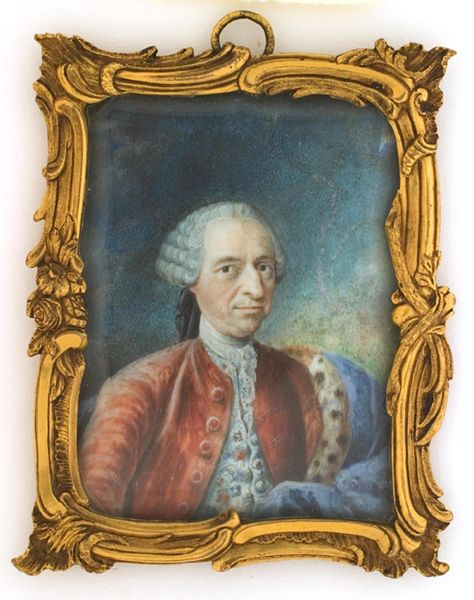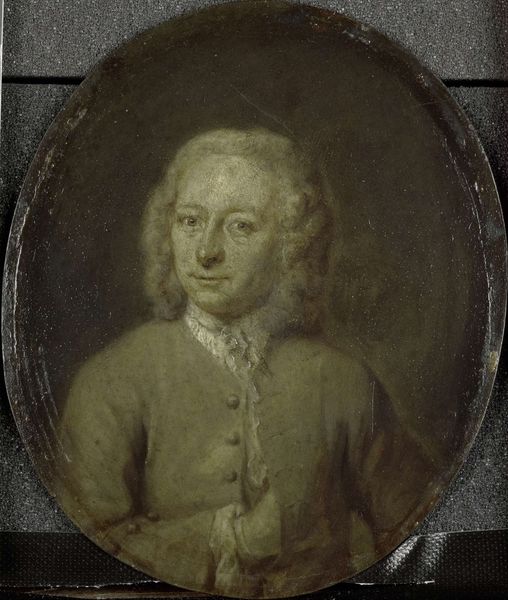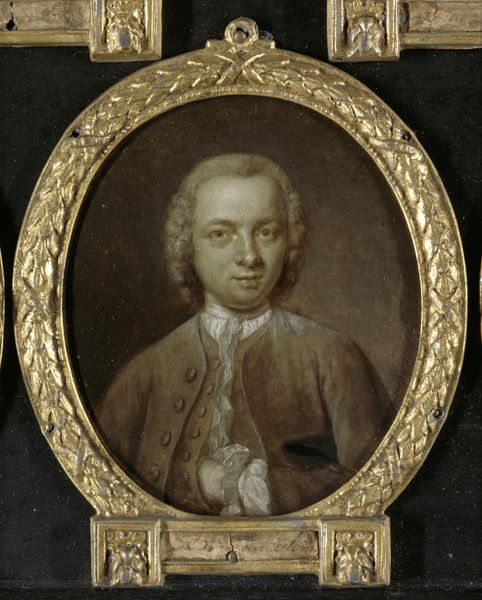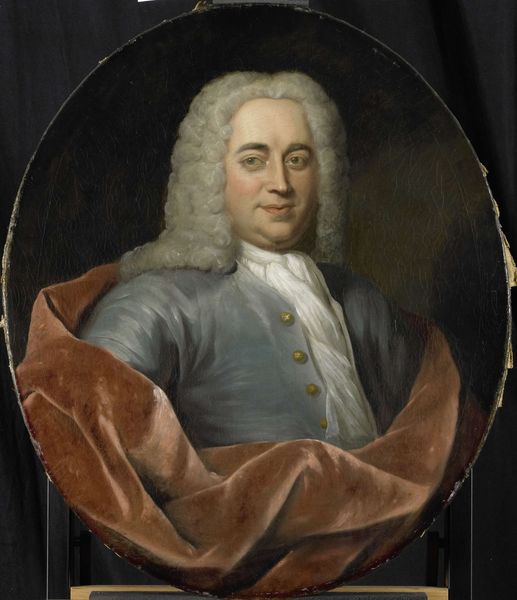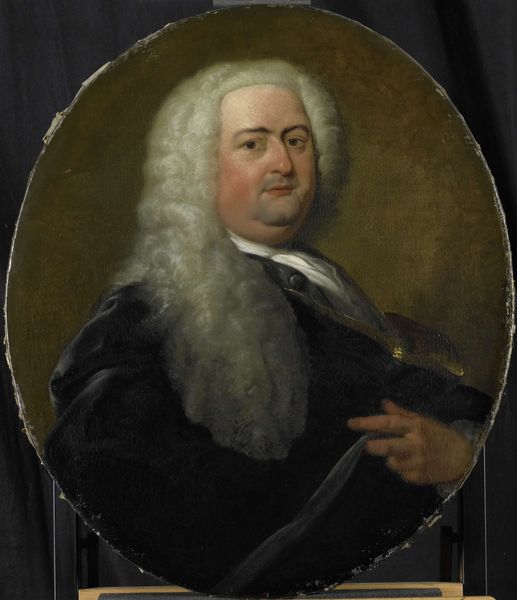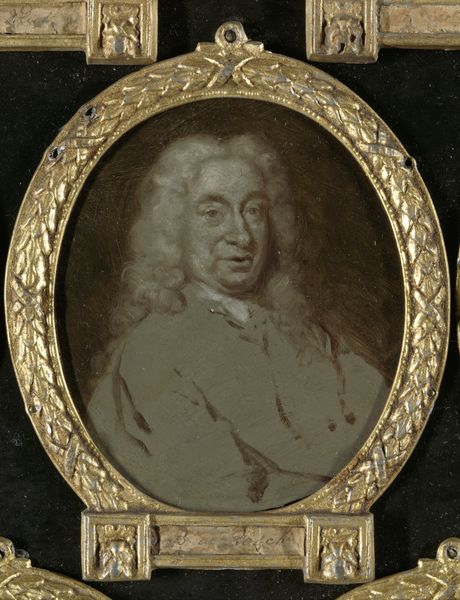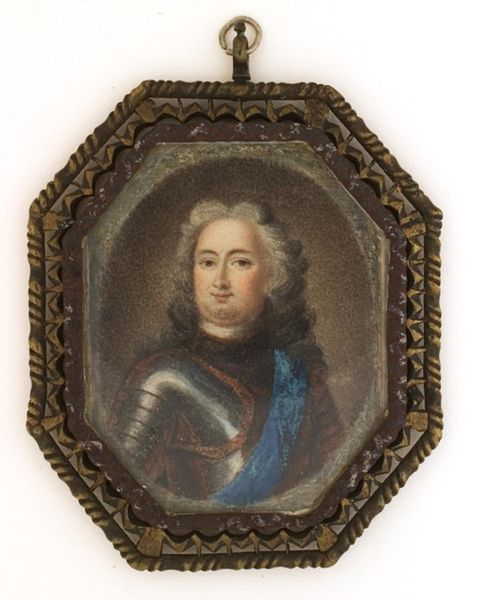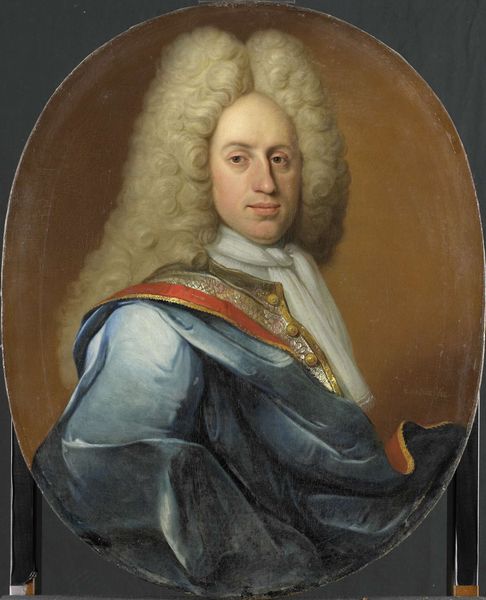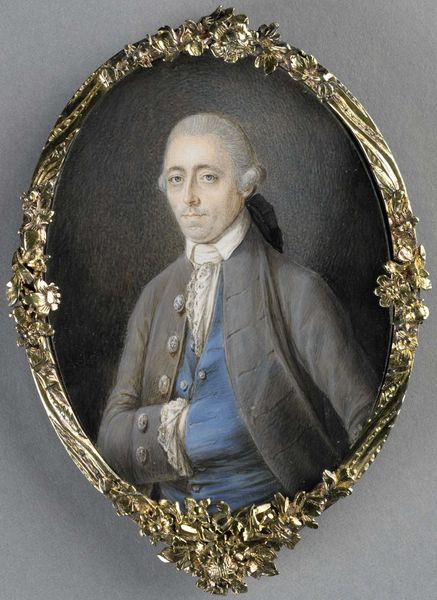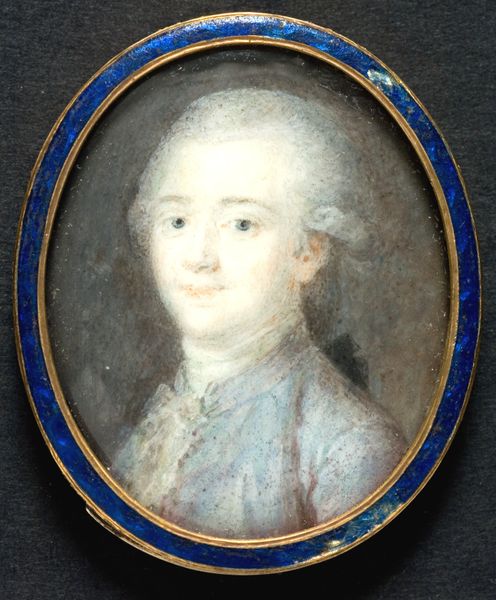
painting, oil-paint
#
portrait
#
painting
#
oil-paint
#
oil painting
#
genre-painting
#
portrait art
#
rococo
Dimensions: height 10.5 cm, width 8.5 cm
Copyright: Rijks Museum: Open Domain
Curator: Here we have Nicolaas Reyers' "Portrait of Joannes Badon, Poet from Vlaardingen," painted sometime between 1732 and 1771 using oil paint. It exemplifies the Rococo style. Editor: He looks…amiable, almost like a slightly disheveled cherub, lost in thought. It’s the wispy white hair and that gentle gaze, isn't it? All framed within this elaborately ornamented, gilded oval. Curator: The oval format was quite popular for portraits, offering a contained, intimate view of the sitter. Gold leaf also carried symbolic significance, of course, connoting status and perhaps even a touch of the divine. Rococo delighted in these ornate frames. Editor: Right, and that muted blue of his jacket juxtaposed with the gaudy frame – it's like a whisper fighting to be heard amidst all the gilded shouts. I wonder what sort of poems this man penned. Curator: As a poet, Badon likely saw himself as a custodian of language, someone who could reveal deeper truths about human nature and the world. That simple blue perhaps suggests a certain humility, a dedication to craft over outward display, a desire to embody republican virtue as befitted a patriot. Editor: Or maybe he just really liked blue. I’m getting a sense of understated dignity here, but I wonder if there might be a hint of self-deprecation, a gentle irony in the set of his lips. Curator: Irony certainly wasn’t absent from this period. Artists were experimenting with psychological complexity. This is further demonstrated in the hint of dark, possibly fading drapery just over his right shoulder – something of a somber counterweight. This wasn't simply capturing a likeness, it was about revealing interiority. Editor: He definitely intrigues, doesn't he? Beyond the style and status symbols, there's this tangible sense of a thoughtful person observing the world. You almost feel as if he is sharing a secret. I am grateful I had the opportunity to observe. Curator: Indeed. This portrait invites a different mode of historical engagement, I feel, encouraging the observer to look beyond the outward displays of wealth and consider inner realities.
Comments
No comments
Be the first to comment and join the conversation on the ultimate creative platform.
